WEAVING THE PAST director Walter Dominguez and executive producer Shelley Morrison will participate in a Q&A following the 4 PM screening at the Playhouse on Sunday, August 24.
Vulture’s David Edelstein Interviews Wallace Shawn, Andre Gregory and Jonathan Demme, the Triumvirate Behind A MASTER BUILDER
This August 15th we’ll be opening Jonathan Demme’s filmed version of Wallace Shawn and Andre Gregory’s acclaimed stage production of Henrik Ibsen’s A MASTER BUILDER. Recently film critic David Edelstein, a self-proclaimed Ibsenite, sat down for a group interview with the triumvirate:
On Wednesday, July 22, I had the privilege of hosting a talk with Andre Gregory, Wallace Shawn, and Jonathan Demme, under the auspices of the Screen Actors Guild Foundation, after a screening of the trio’s impressive collaboration A Master Builder (now playing at New York’s Film Forum). Much as they did with Uncle Vanya (filmed by Louis Malle as Vanya on 42nd Street), Gregory, Shawn, and the cast rehearsed Ibsen’s play for many years, ultimately performing it for small, invited audiences. Malle being dead, Demme stepped into the breach and filmed the production quickly and well.
A Master Builder centers on acclaimed architect Halvard Solness (played onscreen by Shawn), who fears being dislodged by the next generation. He feels especially vulnerable because he has, over the last decade, gone from making towering structures to smaller buildings in which real people can live. He has lost some stature and is in a depressive marriage with a prim ghost of a woman (Julie Hagerty). At a key juncture, a young woman, Hilda (Lisa Joyce), a kind of architect groupie, arrives to spur Solness to ascend once more — to drive him toward that unattainable ideal, both metaphorically and literally. (She wants him to lay a wreath at the top of his new tower in spite of his fear of heights.)
This was a transitional play for Ibsen (he had many), a move from the more naturalistic dramas (the best known are A Doll’s House, Ghosts, and Hedda Gabler) of his middle stage and towards the mysterious, symbolic works on which he labored until his death. Gregory and Shawn’s innovation is to make Hilda and everything that happens in her wake a deathbed dream of the master builder. That might offend purists, but, as far as I’m concerned, it brings out every one of the play’s undercurrents while accounting for its often ludicrous surface. I’m not sure Ibsen would have approved, but I think he’d have liked how well the version plays.
What follows is an edited version of our onstage talk. Let me warn you that we don’t discuss Gregory and Shawn’s dramatized version of their friendship inMy Dinner With Andre or Shawn’s inconceivably beloved performance in The Princess Bride. The audience consisted of actors, and the focus was tightly on this play, this film, and this creative process. I had a lot of fun, and I hope you’ll enjoy reading it.
David Edelstein: First let me say that I’m not just a film critic, I’m an Ibsenite. I love Ibsen and I love this play … and every time I’ve seen it, it has stunk up the stage. It’s an obstacle course over a minefield. You have this naturalistic form and these mythic characters, and audiences either laugh inappropriately or roll their eyes. If you had asked me, “Should we do this play?” I’d have said, “Steer clear.” And yet this is a great movie. What drew you to A Master Builder in the first place? And at what point did you think you could make sense of it by doing it as a dream play?
Andre Gregory: Well, I think what drew me to it was that I was getting old. [Audience laughs and claps.] Thank you.
Wallace Shawn: He wasn’t 80 at that time.
Gregory: When we started this 16 or 17 years ago, I was young, yeah. On a more interesting level, I think that I saw Solness as an artist who had, in a way, reached the end of his career or had nothing left in him to create and finds the way to embrace the last interesting creative challenge, which is giving up this life, and how to do that. When I was a 7-year-old boy, I went to a school where every Christmas, they read Dickens’s A Christmas Carol, and I was fascinated by the character of Scrooge, who I see somewhat like Solness. There’s always hope. No matter what kind of a son-of-a-bitch you are, no matter how unhappy you are, how loveless, it’s not over ’til it’s over. And once, when I was in Poland, I was introduced to a young man who didn’t know who I was and he looked into my eyes and he said, “When I look into your eyes, I see the saddest optimist I’ve ever met.” I don’t know if that answers your question.
It does. I never thought of A Master Builder on those terms. I think of Ibsen’s final play When We Dead Awaken that way, as the story of an artist figuring out how to die, but it never occurred to me that you could locate that idea in A Master Builder, too.
Gregory: Well, of course we emphasize it, and when Wally and I had our mutual, in a way, death scene together — that first scene in the movie — this guy [Jonathan Demme] was roaring with laughter. The more depressing it got, the funnier he thought it was.
Was the theatrical production a dream play?
Shawn: I didn’t feel comfortable tampering with the text, really, until we put in something like a dozen years. We rehearsed the play starting in 1997—
Most artists peak around the seventh year of rehearsal, I hear.
Shawn: —and after we had done about 12 years, I did feel that somehow I had earned that right — which could be certainly argued with, some people might say that was a terrible thing to do — but I did tamper with the text, taking out certain things and putting in the fact that it was all a dream. Because it is not a realistic play, and it can’t be a realistic play, and Hilda cannot be a real girl. I mean, in a very, very tortured way, you could figure out a story in which Hilda made sense as a real person, but you’d be disturbing Ibsen’s play, really.
She was based on a real person in Ibsen’s life, but he transformed her into a mythic creature.
Shawn: She’s a fantastical figure, and Andre had always seen her as that. Once that decision was made, you can see how the play really is about someone wrestling with the contradictions in his own life, contradictions that he cannot resolve and he doesn’t resolve. And of course, you feel that of Ibsen himself.
Gregory: He was the most self-revelatory writer. Maybe because it was so outlandish and so impossible — and people in his time didn’t know that you could be a confessional dramatist in that way — that I don’t think people asked him, “Gee, do you feel these contradictions within yourself?” Because they wouldn’t have presumed such a thing.
Read the rest of the interview on the Vulture.com site.
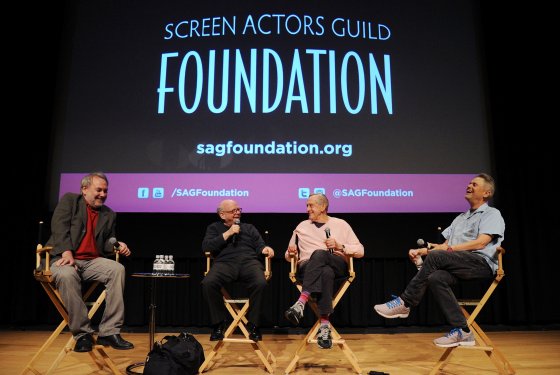
Music Hall Q&A’s with 37: A FINAL PROMISE Actor-Filmmaker Randall Batinkoff and Co-Star Scottie Thompson
Randall Batinkoff, star-director-co-screenwriter of the new indie drama 37: A FINAL PROMISE, and co-star Scottie Thompson will participate in Q&A’s after the 7:30 PM screenings at the Music Hall on Friday and Saturday, August 8 and 9.
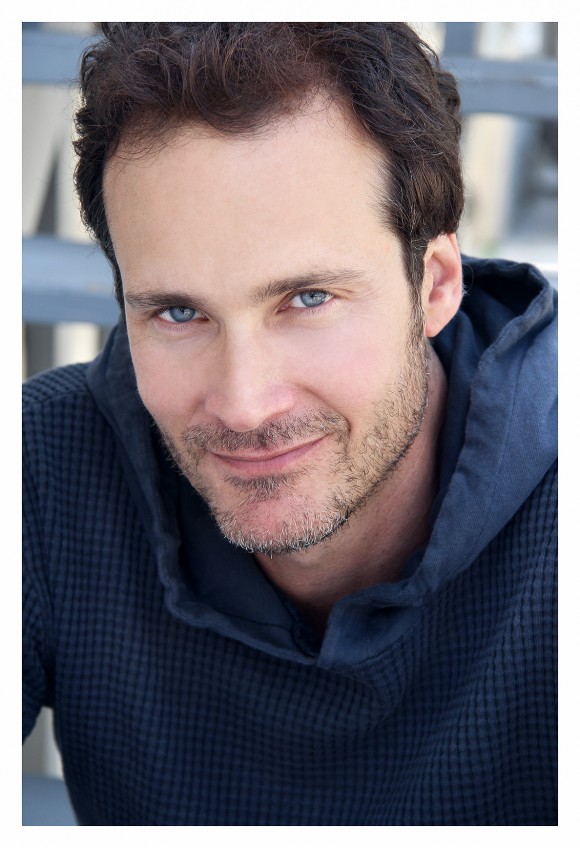
Interview with FIFI HOWLS FROM HAPPINESS Director Mitra Farahani
We are very pleased to be opening the new film FIFI HOWLS FROM HAPPINESS at our Royal and Town Center theaters on Friday, August 15. The lyrical documentary explores the enigma of provocative artist Bahman Mohassess, the so-called “Persian Picasso,” whose acclaimed paintings and sculptures dominated pre-revolutionary Iran. In the Village Voice Michael Atkinson called the film “never less than addictively fascinating – Mohassess’s story is a heroic torch of individualism battling mad-state ideology, from the Shah to the mullahs, and his autumnal stance toward all things non-Mohassess is hilariously derisive.” Recently Hollywood Soapbox interviewed director Mitra Farahani about her film. Mohassess, she says, “used to ask: “what could be the meaning of painting anymore, in a world with a sky devoid of birds, a sea devoid of fishes and a wood devoid of beasts?’ In front of all that violence Mohassess’ answer of course was not self-destruction, for the course of his life showed him harshly struggling with those issues, in a positive attitude. But certainly the end of his life, the choice of self-exile and symbolic retirement, all the violence in the world that profoundly disgusted him, all contributed to a more violent answer to violence. Destruction progressively becoming a part of it.”
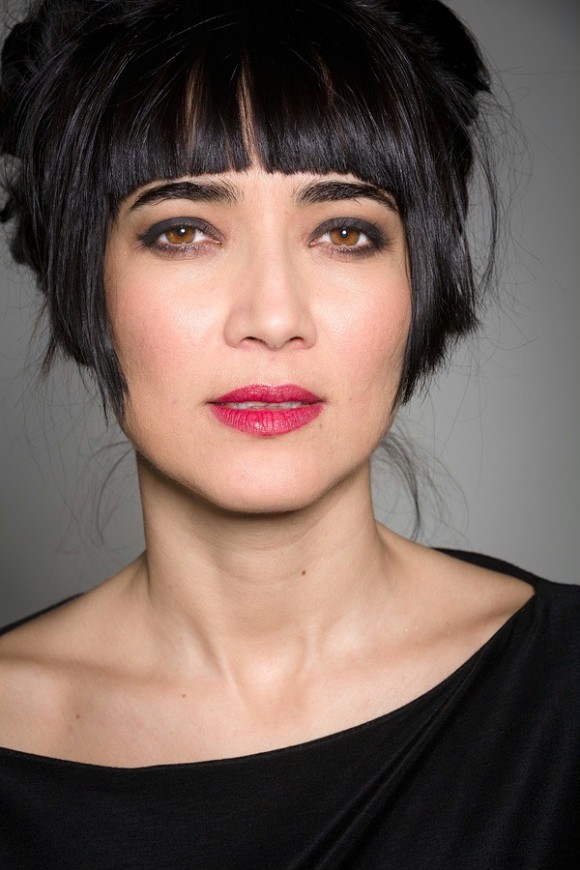
FORT MCCOY Q&A with Filmmaker Kate Connor
FORT MCCOY is a new drama based on a true story about a family that lived next to a Wisconsin POW camp that held Nazis during WWII. The film stars Eric Stoltz, Lyndsy Fonseca, Camryn Manheim, Seymour Cassel and Matthew Lawrence and Kate Connor, who wrote the screenplay, co-directed and plays her real-life grandmother. Ms. Connor will be at the Music Hall in Beverly Hills for a Q&A following the 7:30 PM show on Friday, August 15.
http://www.youtube.com/watch?v=0O3Sb6iKKsY
Win Tickets to FOREVER FLAMENCO at the Ford

Laemmle has several pairs of tickets to give away to the astounding FOREVER FLAMENCO — a special one-night only celebration of music, song, and dance at the Ford Amphitheatre in Hollywood. The event takes place Saturday, August 9 at 8:30pm.
The dancers, musicians and singers of FOREVER FLAMENCO have been delighting Fountain Theatre audiences for over two decades with the intensity, precision and exhilaration for which flamenco is known. Now Forever Flamenco returns to the outdoor stage at the FORD THEATRES with this passionate expression of Spanish culture. A roster of internationally renowned flamenco artists will pay tribute to Los Angeles flamenco pioneer ROBERTO AMARAI in what promises to be a sizzling performance.
——————————
Acclaim for Forever Flamenco:
The Fountain’s Forever Flamenco series has been called “the city’s preeminent flamenco series” by the Los Angeles Times and “L.A.’s most significant venue for flamenco” by the LA Weekly.
Working Author designates it “the rarest of treats… for both connoisseur and novice alike, ‘Forever Flamenco’ offers the opportunity to luxuriate in the incendiary passions of flamenco.”
Dance writer DEBRA LEVINE says, “performances feature superb gypsy guitarists and singers. Do you enjoy seeing the body in spellbinding motion? Great artistic individuality? Live music? Then go,” and Stage and Cinema’s TONY FRANKEL writes, “Thrilling, sexy and sensuous.”
—————–
Visit Forever Flamenco on the web for tickets and more info.
25 Years Later – The Enduring Legacy of WHEN HARRY MET SALLY
Director ROB REINER and writer NORA EPHRON’s 1989 unassuming romantic comedy, When Harry Met Sally looms large in cinematic history both as a genre defining film and cultural touchpoint. But have you ever wondered why? Just what makes BILLY CRYSTAL’s “Harry” and MEG RYAN’s “Sally” resonate so strongly even a quarter century later? MARK HARRIS, writing for Grantland.com, explains all in his thought-provoking piece, reprinted below.
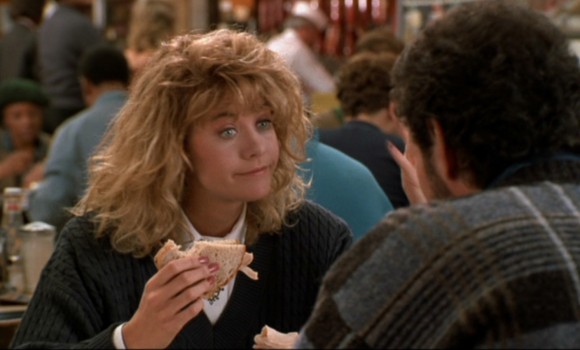
When ‘Harry’ Met ‘Annie’
by Mark Harris, July 21 2014 | from Grantland.com
It was not necessarily considered a keeper. Many reviews were good, but many were laden with reservations. The New York Times called the movie “amazingly hollow” and “the sitcom version of a Woody Allen film,” and in Newsweek, David Ansen wrote that it “doesn’t quite add up.” It never played in more than 1,200 theaters, never finished higher than third at the box office, and got only one Oscar nomination (for its screenplay).
When Harry Met Sally … was, in other words, a nice, better-than-average summer movie, an after-dinner mint for anyone who had room for one more bite after the behemoth of Tim Burton’s Batman. Who knew that, just like the improbable couples whose droll oral histories punctuate the movie, it would turn out to be built to last, the romantic comedy that reinvented the whole template?
By the time When Harry Met Sally … opened in July 1989, it had been a dozen years since Annie Hall, the last grown-up comic love story to make a lasting cultural impression. That, too, was a movie about a romance — a failed one — between a Jewish guy and a WASPy lady, and the chasm between their cultures, their backgrounds, and their outlooks (her glass half-full, his all empty) was so vast that it took a split screen to place the two families in the same universe.
The decade that followed had been a weird one for the rom-com, which seemed to retreat from Annie Hall’s not-awful sexual politics all the way back to The Taming of the Shrew. In the 1980s, when a blonde woman and a not-blond man were onscreen together, the idea was usually that the woman needed some serious thawing out (as in TV’s Moonlighting and L.A. Law). There were some winning exceptions, including Rob Reiner’s college-age charmer The Sure Thing and, in the spring of ’89, Say Anything … — in both movies, John Cusack was a champion yearner. But the genre needed a game-changer, and romantically and culturally, When Harry Met Sally … was it. If you want to know how we got from Annie Hall to Knocked Up, there’s only one route, and it’s through this movie.
When Harry Met Sally … is a milestone in the shape of a happy collaboration between three distinct Jewish comedy sensibilities — those of director Reiner (menschy and sentimental), screenwriter Nora Ephron (romantic but also tough-minded and feminist), and costar Billy Crystal (blunt, jabby, wisecracking) — that together became more than the sum of their parts. The movie and its male protagonist are both one step firmly away from the schnooky, high-minded but kvetchy perpetual outsider that Allen had played; instead, When Harry Met Sally … offers a gentle but firm reshaping of traditionally embattled/embittered “Jewish” humor into something more emotionally integrated and less neurotic than it had been. Crystal, a lean and not-yet-moonfaced 40 when the film was made, seemed like a guy who might actually be able to get laid. The movie doesn’t front-and-center the fact that he’s Jewish, and it doesn’t have to; by 1989, audiences understood the shorthand — it’s enough that he’s a mouthy, opinionated, white Knicks fan who leads with humor and shrewdness but doesn’t have quite as much game as he thinks.
At the same time, thanks largely to Ephron, the movie provided a heroine who was not an unapproachable, frosty shiksa goddess but a mass of tics, foibles, and issues of her own — an interesting mess rather than a dull ideal. And as embodied with enduring charm by Meg Ryan, she even manages to be a kind of everywoman; as beautiful as she is, she can actually convince you that she’s not, in the words of her sidekick, Carrie Fisher, “thin, pretty, big tits — your basic nightmare,” but rather the kind of woman who’s made to feel insecure by that kind of woman. If you like the basic nightmare
That tweaked recipe for romance — make the boy a little less Jewish and the girl a little more Jewish — turned out to be, within the genre, a tectonic realignment. It is not an accident, culturally speaking, that just two weeks before When Harry Met Sally … opened, NBC aired a pilot it hadn’t felt confident enough to order to series, a comedy that Brandon Tartikoff worried was “too regional,” specifically too “New York” (in Hollywoodese, then and now, “New York” is to “Jewish” as “urban” is to “black”). That pilot, The Seinfeld Chronicles, did well enough in its one airing opposite Jake and the Fatman for NBC to place a cautious order for four more episodes to air a year later. Notably, that first half-hour did not feature Julia Louis-Dreyfus (though it did have a waitress whose name in the first-draft script was, perfectly, Meg). But with Reiner and Ephron paving the way, by the time Episode 2 aired a year later, Jewish Jerry’s indeterminately whatever ex-girlfriend Elaine had been added to the ensemble. That Jewish/gentile dynamic would continue to play out a couple of years later in Friends, in which the Jewish guy — hangdog, neurotic, but at least socialized and sexually awake — was Ross Geller (side note: Why was Ross so much more Jewish than his own sister?) and the object of his affection, played by Jennifer Aniston, was Rachel Green, a Jewish name for a character who was created so down-the-middle (was she a neurotic Jewish princess/runaway bride or a neurotic goyishe blonde?) that decades later, her provenance remains one of sitcom history’s riddles of the Sphinx. (Even the excellent website Jew or Not Jew is stumped about Rachel, although it expresses a firm conviction that Seinfeld’s Elaine is not Jewish, which would make her the only frizzy-haired brunette Upper West Sider named Elaine in the history of Manhattan Island not to be.)
The legacy of When Harry Met Sally … is that it made all of this matter less. Twenty-five years later, in our Apatovian cosmos, the line between “Jewish” humor and humor in general and between “Jewish romantic comedy guy” (Seth Rogen, Jason Segel) and “romantic comedy guy” is so blurry that … you know … where do you put Paul Rudd? (Under R for Rudnitzky, if you’re his grandfather.)
Anyway, back to the movie, which is a fleet 96 minutes. Twenty-five years is a long time; 1989 is worth commemorating as the last moment when a blonde actress was allowed to have dark eyebrows onscreen. This may also be a good time to point out a copy editor’s nightmare, which is that the movie’s title is not When Harry Met Sally but When Harry Met Sally … , ellipsis included. Meaning, when Harry met Sally, then what happened? It’s notable that the ellipsis comes at the end, not at the beginning. Their story is about the start of something, not the happily-ever-after wrap-up.
The movie opens with one of its few tactical errors: White-on-black credits and “It Had to Be You” (an ode to that staple of rom-coms, fate, which begins and ends the movie) place the film squarely in the “If you like Woody Allen, this is for you” niche, and not to its benefit. When Harry Met Sally … is, it must be said, insular and largely oblivious about its insularity. It would be cheap to admonish its makers with contemporary college-seminar hindsight about “privilege,” but the young and impressionable should be warned: Everybody has big apartments, they drink white wine from crystal glasses and play Pictionary in well-appointed living rooms, and they shop at Saks and Bergdorf. White-on-white, sophisticated Manhattan is, in this film, the only part of New York City that exists. (That can’t all be filed under “Times were different then,” since the same summer brought us Do the Right Thing.)
In all other ways, however, this is nothing like a Woody Allen movie. It’s not Annie Hall, but a movie about people who have seen Annie Hall. It has a very precise and symmetrical romantic structure: Harry has a wingman (Bruno Kirby) and Sally has a wingwoman (Fisher), and the action, which starts with both characters graduating from college the year that Annie Hall came out, advances in neat five-year increments, each of which is punctuated with the how-it-happened-for-us testimonial of a different couple. The movie starts with Harry and Sally, strangers to each other, sharing driving chores from Chicago to New York. She’s a priss with Farrah Fawcett-Majors hair (“You’re probably one of those cheerful people who dot their I’s with little hearts,” he sneers); he’s a slob in a hoodie who spits grape seeds and thinks he’s deep. They quarrel all the way, largely about the ending of Casablanca. “Obviously you haven’t had great sex yet,” he says. “It just so happens I have had plenty of good sex!” she retorts too loudly in a diner, to her own mortification.
Quickly, it emerges that Harry is more sexually confident than Sally, or at least talks a better game. But she holds him off, leading to his declaration that “Men and women can’t be friends because the sex part always gets in the way … no man can be friends with a woman he finds attractive” — the thesis that launched a thousand sitcoms.
Rewatching the movie for this piece, I was jarred by how wolfish and aggressive Crystal’s character is at the start — just three years after her script for Heartburn, Ephron was still in post–Carl Bernstein mode, where the suspense is whether Mr. Right is also an asshole. “You look like a normal person, but actually you are the Angel of Death,” Sally snaps at him when he starts questioning her current relationship. (Sally, an idealistic journalist, is a young-Ephron surrogate; Harry often sounds like an older, wiser Ephron.)
Everything in these early scenes is there for a reason; each moment is given an elegant payoff or reversal five or 10 years later, when the characters grow up. The Casablanca squabble turns into a wistful split-screen scene (a nod to Woody?) in which both characters are in bed — their own beds — watching the movie while talking to each other on the phone. And Sally’s early diner embarrassment is flipped and redeemed in the famous “I’ll have what she’s having” scene, in which this time, Harry is mortified when she demonstrates with unexpected abandon that she knows a lot more, and he a lot less, about sex than he imagined. (It’s particularly great because at times, the movie runs the risk of letting the guy have all the smartest lines; this is the moment that levels the playing field between Harry and Sally, right when the film requires it.)
That scene is also a reminder, as if one were needed, of how valuable and missed Ephron’s voice is. She was, among many other things, a second-generation Hollywood screenwriter who was extremely adept at working within a very traditional form and tugging it nondidactically toward something a little more modern and astringent. Perhaps because she was steeped in all of those screwball comedies in which women like Irene Dunne and Katharine Hepburn and Carole Lombard were allowed to have voices and personalities and insecurities and aspirations, she isn’t interested in simply making Harry the player and Sally the goal; they share custody of their story. This isn’t so much a romantic comedy in a woman’s voice (like, for instance, a Nancy Meyers movie is) as it is a romantic comedy in which a woman is allowed to have a voice, which may be even rarer. And, as Sleepless in Seattle affirmed a few years later, Ephron had an ideal avatar in Ryan, who isn’t particularly interested in doing the brittle-bitch thing. Sally is a person — she and Harry talk about each other’s bad dates, she shows him how to lay down a rug, they make each other laugh. She’s a full partner. (Which is why ever since this movie, when the plot of a romantic comedy is nothing more than a man teaching a woman how to leave her uptightness behind, it’s felt like a step backward.)
As the story moves, with economical briskness, toward its conclusion, Harry’s assertion about friendship gives way to a more grown-up inversion of his idea, which is that maybe being friends is the best possible road to falling in love. As romantic-comedy premises go, that one is unlikely ever to go out of style. What has gone out of style is the thing that turns out to be the movie’s secret weapon: It’s a comedy that isn’t afraid of sadness. There’s a scene in which Harry and Sally are out for the afternoon, enjoying each other’s company, playing with the brand-newest technology of 1989, a karaoke machine for sale in The Sharper Image, when they run right into Harry’s gorgeous ex and her new guy. It’s a hard, nerve-shaking, mood-spoiling moment for Harry.
A variation on that scene has since occurred in many films, and in most of them, the Sally character gives some elaborate pulling-victory-from-defeat performance suggesting that she and Harry have a great new life, an action so over the top that it cements the guy’s love for her. Ephron and Reiner don’t do that. They just let the scene play out naturally, because they understood that the important thing about that moment is not redemption but pain and fear. It’s quickly followed by (with all due respect to “I’ll have what she’s having”) Ryan’s best moment, in which she reacts to the news that her own ex is getting married with an immense and genuinely touching crying jag, with Harry only half-able to console her. (“And I’m gonna be 40!” “When?” “Someday!” “In eight years.”) When each character hits rock bottom, they’re with each other, and we’re with them. The sad/scary undertow of every romantic comedy is “What if I’m not in a romantic comedy but a melodrama? What if it never works out for me?” By letting them — and all of us — feel that tug, the movie finds its stakes, and it also finds the punch line that has really made it last: At Harry’s and Sally’s lowest moments, we want what they’re wanting.
See CHINATOWN on the L.A. River – This Saturday Night!
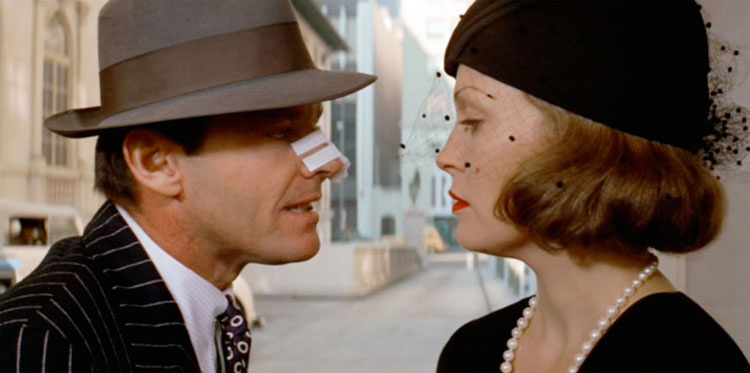
Can you think of a better place to watch JACK NICHOLSON sleuth around L.A., uncovering it’s “water wars” secrets … than the L.A. River itself? We can’t either.
To make that happen, the L.A. River Regatta Club is inviting us all down to L.A. State Historic Park at the Broadway Bridge Viaduct to view the 40 year-old classic CHINATOWN this Saturday Night (July 26).
Called a “Bike-In Movie”, the event kicks off at 7pm with a picnic (bring your own), followed by an 8pm talk about adventures in the Owens Valley — the region at the heart of the historic California Water Wars — by the intrepid “Tom Explores Los Angeles.” The film starts at 8:30pm.
Sounds like the perfect summer evening for Angeleno noir buffs! The evening is co-sponsored by FOLAR (Friends of the L.A. River) and CA State Historic Parks. Check out all the details HERE.
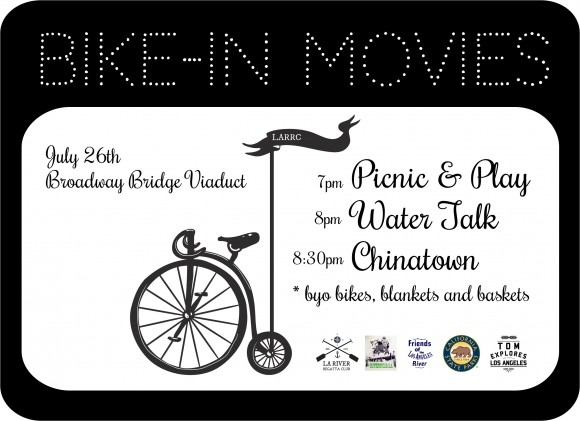
- « Previous Page
- 1
- …
- 224
- 225
- 226
- 227
- 228
- …
- 268
- Next Page »
